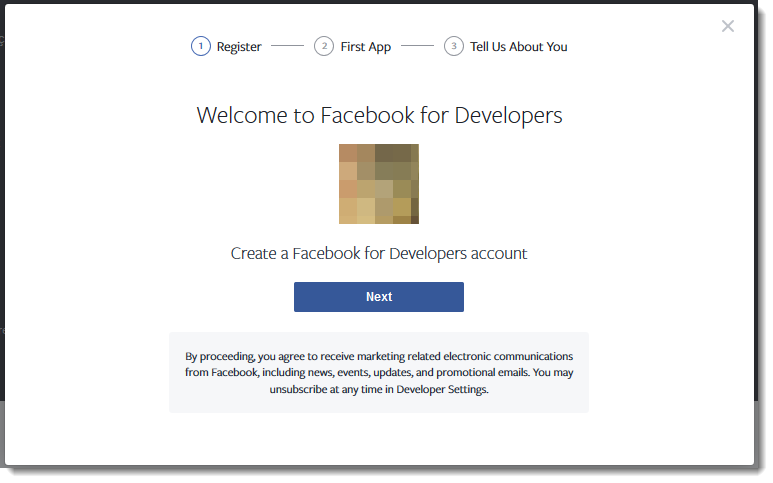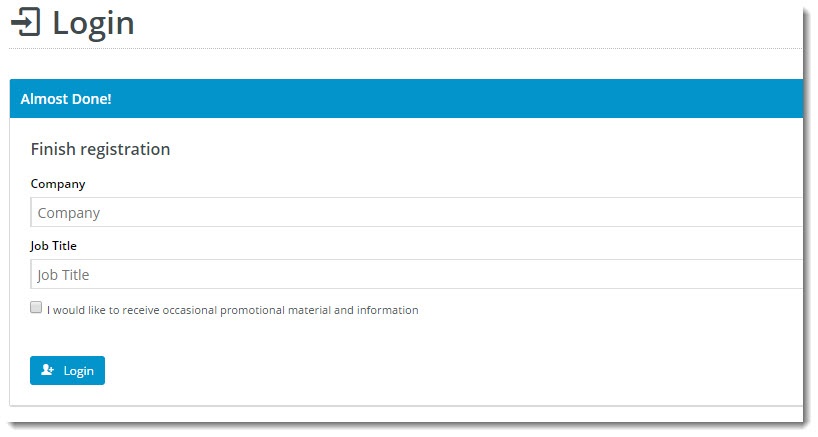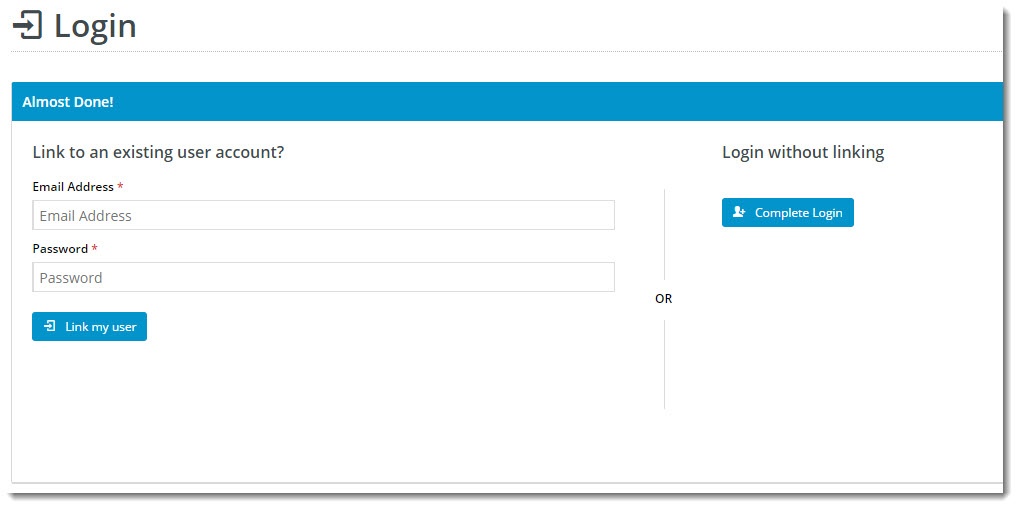...
| Excerpt |
|---|
Facebook Sign-In is a secure (OAuth 2.0) login method that aims to reduce friction and "login fatigue" for your users. Instead of signing in to your website with an email address and password, your customers can login with using their Facebook account. |
This article will guide you through the implementation of Facebook Sign-In for your site.
...
| Info | ||
|---|---|---|
| ||
Before continuing, you'll need to be running version 4.00+ and have the 'Third Party Login' feature enabled in the CMS. Contact us to switch this on for you. |
1. Create a
...
Facebook App ID
To enable Google Facebook Sign-In, you'll need a Google API Console project & Client ID.there's some set-up required on the Facebook side. Follow the steps below, or use Google's guide to get started - .
- Navigate to the Facebook for Developers page https://developers.
...
...
- - and click 'Get Started'.
- You'll be prompted to login with your Facebook account, then you'll be prompted to create a Facebook for Developers account.
- Follow the prompts to create your account, then once you're in your dashboard, click + Add a New App.
- Enter your website name and contact email address, the click Create App ID.
- This will generate your App ID and Secret (password).
- Next you'll need to enter the Domain and URL details of your site and Save Changes.
- Once your site settings have been saved, you're ready to configure the feature in Commerce Vision's CMS.
2. Configure
...
Facebook Sign-In
Now it's time to set up your website.
- In the CMS, navigate to Settings → Feature SettingsManagement.
- Edit the Configure the Third Party Login feature.
Toggle the Registration Page and Allow Linking options on/off as required for your website. These (If your site is also using Google Sign-in, these options will already be configured. Leave them as they are.)
The 2 options are explained in the table below.
Option Description Example Use Registration Page Displays additional registration fields to the user after they've signed in with GoogleFacebook. You can use this to request more info from your customer before they click Login.
(This screen is only shown on the user's first login.)
Allow Linking To Existing Users Allows a user to login with GoogleFacebook, then link that login to an existing account on your site (if they have one).
This retains all of the user's order history, favourites, etc, with the benefit of a quick Google Facebook sign-in.
(This screen is only shown on the user's first login.)
- Enter your Client ID from Google into the Sign-In Client ID field.
In the Token Info Endpoint field, enter the following: https://www.googleapis.com/oauth2/v3/tokeninfo?id_token={0}
Enable Google SignFacebook App ID and Secret into the appropriate fields.- Enable Facebook Sign-In with the toggle, then click Save!
3. Optional Customisations
...
Change the text on the Registration / Link User page here:
Navigate to Content → Standard Pages.
- Search for and select the Third Party Login Registration template.
- Edit the Third Party Login Registration Fields widget.
- Update the headings, button labels, and prompts here.
Change the headings on the Login pop-up here:
- Navigate to Content → Theme Layout.
- Edit the Login Logout Modal widget.
- Select the Titles tab to update the headings.
Google Facebook Sign-In is a great way to get your customers logged in and shopping with you faster. And your users will no doubt appreciate not having to remember yet another password!
...













